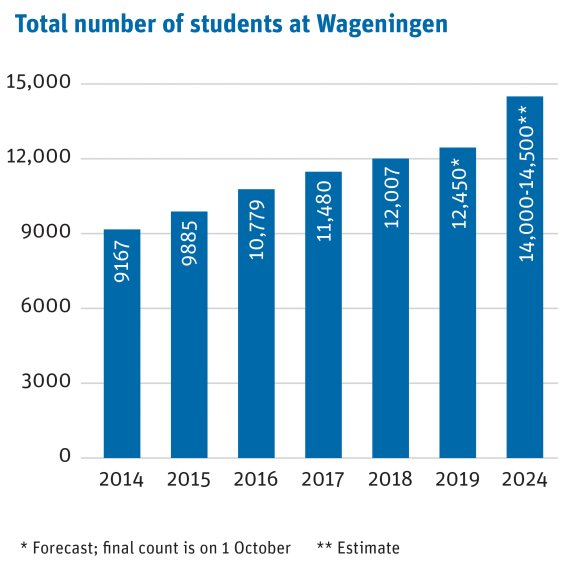The growth in Wageningen’s student population may have slowed slightly due to the fall in the number of first-years but it has not yet come to a standstill. That is because the university is still taking on far more new students than five years ago, so the number of students joining in a given year is greater than the number graduating.
The fall in the intake could affect the long-term forecast, particularly if that decline turns out to be the first sign of a trend. In that case, the number of students in 2024 may be closer to 14,000 or 14,500 rather than about 15,000 as had been predicted (see figure).
However, there are many uncertain factors in the predictions for the coming years. Firstly, it is not clear what the effect will be of the ‘demographic dip’. The number of pupils at secondary schools that prepare for university will fall because there will be fewer teenagers. That could lead to fewer first-year students. On the other hand, an increasing proportion of pupils at those schools are going to university. That is why the Education minister still expects the number of Dutch first-year students to increase slightly in the next few years.
Secondly, it is difficult to predict numbers for international students. The ministry of Education expects numbers to continue to grow over the next few years, particularly from the EU. Wageningen should benefit from this given its strong international reputation. But it is not clear what effect Brexit will have, and the intake from outside the EU depends in part on the policy on scholarships in countries such as Indonesia and Mexico. The university has no control over that.
Thirdly, potential students’ preferences change. Climate, the environment and anything bio-based are increasingly popular, for example, while health and the humanities are in decline. That is causing shifts between universities, but those trends are still developing.

